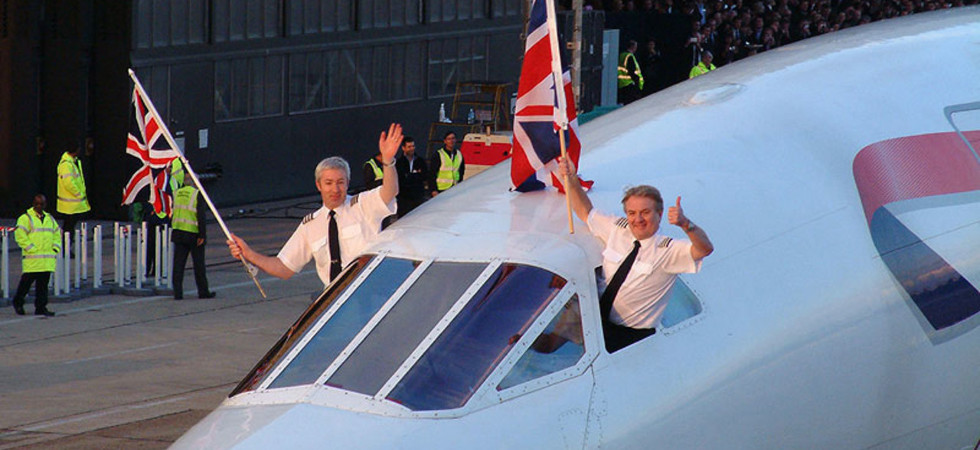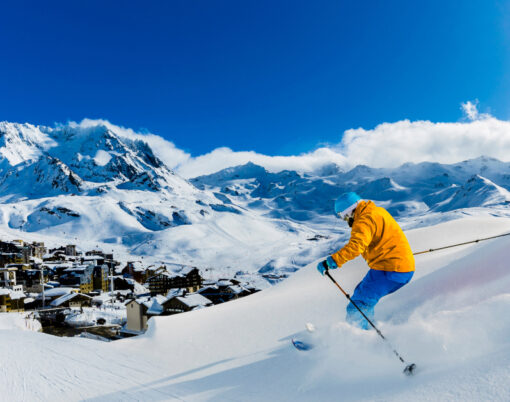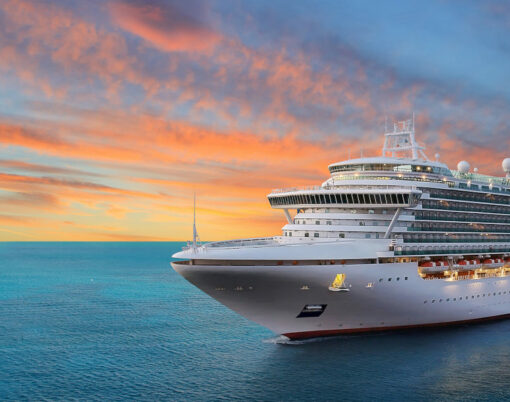‘There’s the view of New York from the Triborough Bridge, there’s the Sydney Opera House and there’s Concorde; arguably the 3 most beautiful manmade sights in the world.’ The words of Sir David Frost, one of Concorde’s most frequent and loyal flyers. With 2019 marking 50 years since Concorde’s maiden flight, Michael Atkinson explores the history of the world’s first commercial supersonic jet and takes a look at how close we are to a new Concorde reaching for the skies once again.
On the 29th November 1962, the governments of France and the United Kingdom signed a concord agreement to collaborate to build a supersonic jet. Concorde, named from that agreement, was to become the first ever supersonic jet to carry passengers commercially and was heralded and acclaimed as a triumph of British & French engineering partnership.
The development of Concorde under the Anglo-French treaty, pitched the two European countries against both the USA and Russia, who were also in the race to launch a commercial supersonic jet. The US would never succeed, its American Boeing 2707, with aspirations to carry 250 to 300 passengers at cruise speeds of Mach 3, cancelled before it ever reached prototype development, a result of development costs spiraling out of control and an increasing caution over the viability of running such an aircraft. The Russians launched a supersonic jet, known as the Tupolev Tu-144, which eventually conducted 55 commercial passenger flights before being grounded in June 1978.
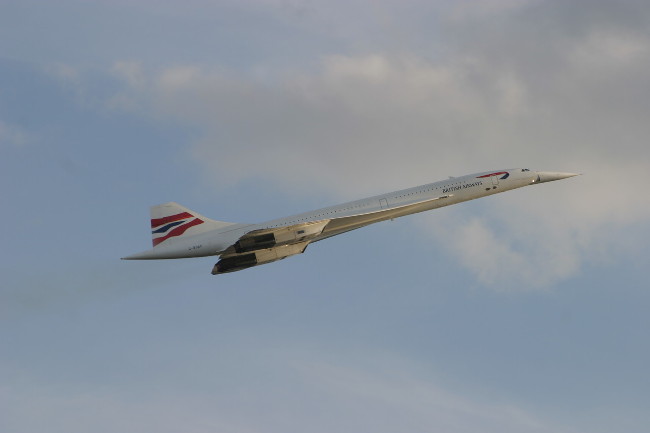
The Tupolev Tu-144 prototype hit the skies just ahead of Concorde, in December 1968, went supersonic on the 5th June 1969 (again ahead of Concorde) and became the first commercial airliner to exceed Mach 2, which it did on the 26th May 1970. After a crash at the Paris airshow in 1973, the Russian project had some delays and its progress lapsed behind Concorde, entering passenger service only in 1977, two years after Concorde. In May 1978, an aircraft crashed on a test flight when being delivered and passenger flights ceased that year as a result, although the Tupolev did continue for a number of years as a cargo jet. This leaves Concorde as definitively the most successful supersonic jet to reach the skies.
2019 marks 50 years since Concorde made its first maiden flight in March 1969. In October of that year, it would make its first supersonic flight. Following development, initially orders were received from around 15 airlines, including Air Canada, Continental Airlines, Qantas, Air India and American Airlines. However, as both environmental and economic concerns grew over Concorde, in the end, the plane was operated by only two airlines throughout its lifetime – British Airways and Air France. Twenty planes were eventually manufactured, six operating as prototype test planes and fourteen entering service as commercial jets.
It was in 1973 that Concorde undertook its first transatlantic crossing from Washington to Paris, flying at an average speed of 954mph in a record breaking time of 3 hours and 3 minutes. January 1976 marked its inaugural commercial flights, with British Airways flying the aircraft initially from London to Bahrain and Air France from Paris to Rio de Janeiro. Regular services to Washington DC arrived later that year and the famous New York route was added in late 1977.
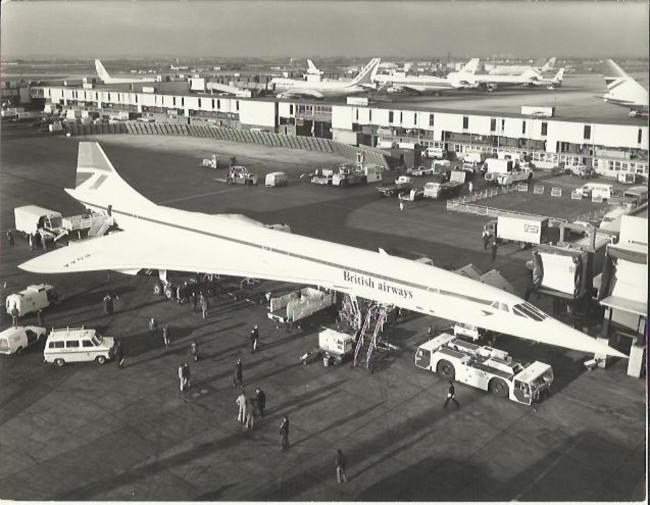
British Airways Concorde made just under 50,000 flights and flew more than 2.5m passengers supersonically. With a take off speed of 220 knots (250mph) and a cruising speed of 1350mph – more than twice the speed of sound – a typical London to New York crossing would take a little less than three and a half hours as opposed to about eight hours for a subsonic flight.
It was this speed between two of the world’s most influential cities, that transformed Concorde into the preferred method of travel for the wealthy and the famous. Famous travellers on Concorde included Cindy Crawford, Claudia Schiffer, Andre Agassi, Sting and Prime Minister Tony Blair. The Queen and the Duke of Edinburgh enjoyed flying on Concorde, their first trip on 2nd November 1977, when they boarded Concorde back to London from Barbados. The aircraft on which Her Majesty flew now resides at the Barbados Concorde Museum after a final flight there in 2003.
Sir David Frost, who became a Concorde ‘frequent flyer’, referenced the aircraft as ‘the only way you can, in human life, be in two places at once.’ Flying at twice the speed of sound, and faster than the rotation of the earth, meant you could board Concorde in London at breakfast and arrive in New York the same day for breakfast earlier than you had set off. On board, passengers could watch the Mach meter at the front of the plane which recorded the aircraft’s speed, following its acceleration to Mach 1 and on to Mach 2. Passengers received a certificate confirming that they had broken the sound barrier. Despite the cramped conditions, service on board Concorde was exemplary and matched that of the world’s finest hotels – champagne and cocktails flowed, lobster and beluga caviar was served. In 2003 an average ticket cost was £6,636.
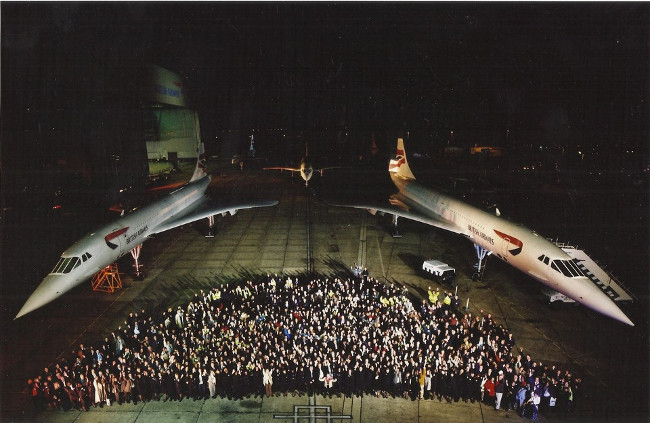
Concorde used the most powerful jet engines flying commercially. The aircraft’s four engines took advantage of ‘reheat’ technology, adding fuel to the final stage of the engine, which produced the extra power required for take-off and the transition to supersonic flight. Its speed as a commercial aircraft was extraordinary and for a number of years, it provided a glimmer of what many believed could become the standard for commercial airtravel in the years ahead. If you have only ever flown subsonic, its London to New York flight time is hard to fathom, transforming an Atlantic crossing to less time than the fast train from Edinburgh to London – Concorde’s fastest transatlantic flight was on the 7th February 1996, when it took a mere 2 hours 52 minutes and 59 seconds to complete its New York to London flight.
Concorde measured nearly 204ft in length and stretched between 6 and 10 inches in flight due to heating of the airframe. It was painted in a specially developed white paint to accommodate these changes and to dissipate the heat generated by supersonic flight. 5,000 hours of testing occurred before Concorde was first certified for passenger flight, a fact which makes it the world’s most tested aircraft ever. British Airway’s Concordes enjoyed a dedicated team of about 250 engineers who worked continuously to ensure safety on board.
On 24 October 2003, British Airways withdrew Concorde, bringing to a close the world’s only supersonic passenger service. The final scheduled commercial flight was BA002 from JFK operated by G-BOAG. The British Airway’s fleet of seven aircraft were subsequently dispersed for preservation at museums and locations around the world – Barbados, Edinburgh, Filton, Manchester, New York, Seattle and Heathrow.
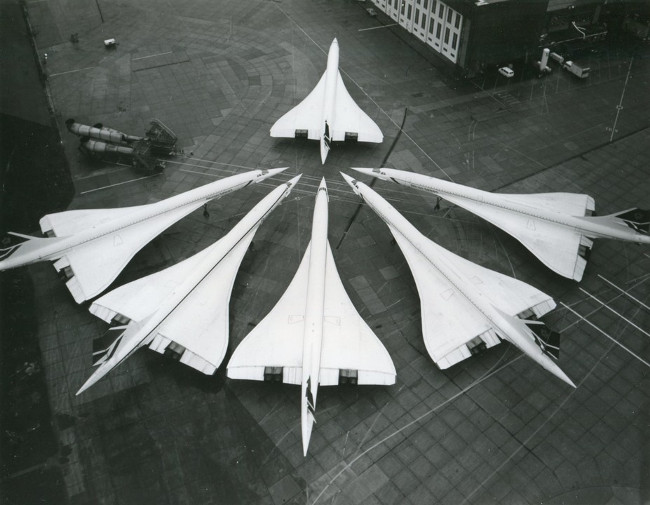
The beginning of the end of Concorde’s career came in 2000 on the 25th June, when an Air France Concorde crashed shortly after take-off. A blown tyre ruptured a fuel tank, setting the Concorde on fire and ultimately resulting in the death of 113 people (109 on board and 4 on the ground). Air France and British Airways immediately grounded the entire remaining fleet whilst modifications were made to ensure that such an incident could not occur again.
Despite re-entering service in 2001, Concorde would never recover its former glory days, its return impacted by a range of factors: following the Paris crash, passengers were more reluctant than previously to fly on Concorde, the tragic events of September 11th 2001 drove a worldwide decline in air travel and Concorde had become ever more inefficient and costly to maintain and run. In short, Concorde no longer made commercial sense for either British Airways or Air France. Concorde would complete final commercial flights for both airlines in 2003, the curtain coming down on one of the most magnificent and celebrated aircraft to ever take to our skies.
Concorde will forever remain an icon of the skies and a monument of modern aviation. That reputation will remain, in part, because it will always be the first ever commercial passenger supersonic jet, but also because, fifty years after that maiden flight, nothing has replaced what many assumed was simply the beginning of a new age of supersonic travel. Instead, since 2003, supersonic commercial travel has stalled completely.
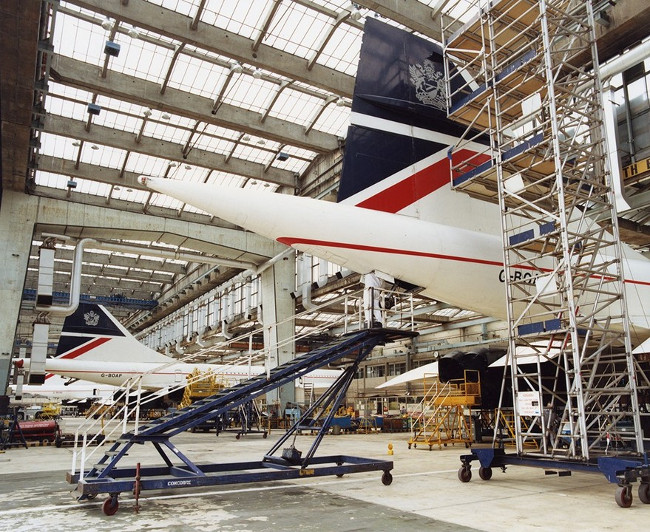
However, over the last 18 months or so, chatter has begun about the next generation of supersonic commercial jets. Boom Technology is one such company determined to see commercial supersonic jets back in the skies in the near future. Boom describes itself as ‘a team of engineers and technologists brought together for the sole purpose of making our world dramatically more accessible’. One such way that they intend to do so is by the reinvention of supersonic travel. For them ‘speed isn’t about going really fast. It’s about closeness. It’s about making far away places feel like they’re right around the corner. If we can fly twice as fast, the world becomes twice as small, turning far off lands into familiar neighbours’. Their mission is to deliver ‘Mach 2.2 speeds with business-class fares and profitability’ making in their words ‘a game-changer for airlines and passengers’. Their commercial airliner will be known as ‘Overture’ and the aim is for it to be operating by the mid 2020s.
Japan Airlines and Virgin Group are said to have pre-ordered up to 30 aircraft. If all progresses to plan, Overture will, once again, revolutionise air travel. Boom believe their jet could reduce a London to Washington flight time from 7 hours 18 minutes to 3 hours and 32 minutes, a Los Angeles to Seoul flight from 12 hours 10 minutes to 6 hours and 6 minutes and Sydney to Los Angeles reducing from 14 hours 55 minutes to 6 hours 55 minutes.
In addition to Boom Technology, Aerion and Boeing have formed a partnership to produce a supersonic jet. They are targeting the first flight in in 2023, the result of the launch of the AS2 Supersonic Business Jet. The AS2 is designed to fly at speeds of up to Mach 1.4 or approximately 1,000 miles per hour.
With Japan Airlines said to have invested $10m into Boom and Boeing quoted as making a ‘significant investment’ into Aerion, it looks like a double breakfast one on either side of the Atlantic, separated by a few glasses of champagne, all before 9am, may just be possible once again.
Image at the very top of the article credit: British Airways












